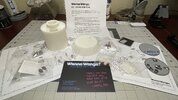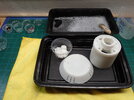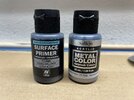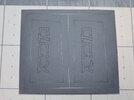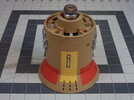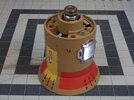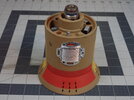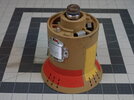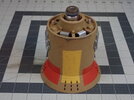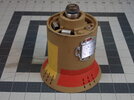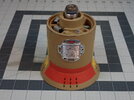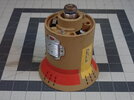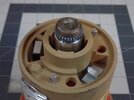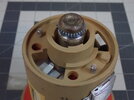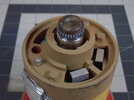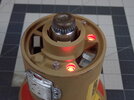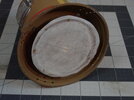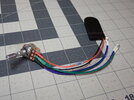Finishing Resin Dynodes
With accurate dynodes unavailable, I decided to go with the resin version. I was 50:50 honestly between the mirrored version and resin but figured with some effort (and standing 10 feet away...), maybe people won't notice its resin...lol so let's give it a shot. Worst case, I can always get another resin set or a mirrored set or an accurate set as this is probably the easiest item on the prop to replace.
I really, really, really wished one of my Vallejo Metal Colors would have worked but 1) I didn't have the proper color, and 2) even if I did, the photos I saw with chrome or anything truly reflective acrylic paint just didn't look good. I thought of getting Alclad or Spaz but heard it is quite finicky and wasn't in a mindset to experiment....too much that is.
Which then brings me to Molotow. I've been wanting to try these pens out for some time and never had a reason...until now. The fact that I can use it like a pen was super convenient vs an airbrush. So I grabbed a set from Amazon (cheaper than any brick store around me) which included 4mm, 2mm, and 1mm tips. I ended up using all three sizes on the dynodes to get into various places.
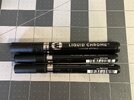
The results are quite amazing. Here are some comparison photos between the gloss black primer and the chrome paint.
Now that said, the paint has particular properties that requires a certain technique to apply for the best finish. I practiced on some plastic spoons first but these are my takeaways:
- paint does not like multiple overlapping lines going across previously painted areas; it leaves marks and looks like crap
- if the area is small enough and you can cover in a straight line, like the louvers, then it looks great
- the paint likes small circles; it seems to minimize the lines and the paint is thick and is self-leveling so the results are very nice when applied in this manner
- once the paint is dry, you can apply another layer over if needed to fill in missed spots and such
Once the chrome dried it is indeed shiny but very sensitive so some type of clear coat is needed. In addition, I intend to weather the dynodes and any paint and weathering effects I plan to use won't stick to untreated chrome.
The problem with clear on chrome though is that it dulls the finish that isn't chrome anymore. I've heard that Alclad and their line of gloss retains the shine but I didn't go down that path.
So here I decided to use Future (I don't have any other glossy clear). In the examples below, the left was with Future sprayed via an airbrush and the right has no clear. You can see the dullness that the clear has on the chrome.
That said, it don't totally bad and in fact it works to my advantage if you will since the metal dynodes does not shine as much as chrome and actually after applying the Future, the sheen of the finish resembles much closer to the metal dynodes than a true reflective mirror finish.
I did a side experiment and it appears (to my eye that applying Future via an airbrush results in a slightly more dull sheen than if I dipped or flooded the dynodes with Future via a pipette). Here's how they both turned out using the pipette technique. At least to me it seems to fall in between the photo above.
The final step here (which I forgot to do earlier) was to enlarge the holes on the dynodes to accommodate the screws.
Using a pin vice and 1.8mm, 2.0mm, 2.2mm and finally 2.5mm drill bits, the holes were enlarged to the proper size.
The reason I used so many bits was how close the holes (around the rectangular opening) came to the edge. Take your time and go slow.
And lastly for those interested, the photo below shows some examples of the Molotow Chrome.
Left Spoon: Molotow applied straight to the spoon using small circles (no primer, no clear)
Right Spoon: Molotow applied in a concentric circle fashion (starting in the middle and expanding outward) that left lines (noticeable towards tip and left side). Left side is tape reside on chrome without clear. After I applied clear to the right side, no tape residue is left behind.

